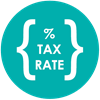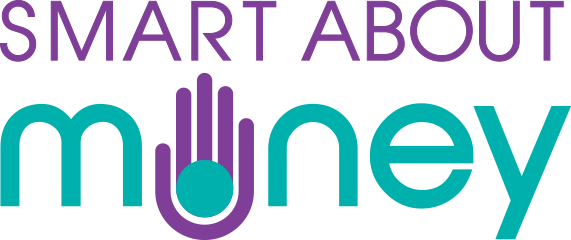The Budget announcement that South Africans will save R15.7 billion as a result of increases in the tax brackets may give you false hope about a big reduction in your tax from this month.
In fact, the rand amounts are small for most taxpayers – the big number comes from the relief being granted  to millions of taxpayers.
to millions of taxpayers.
Taxpayers should nevertheless be grateful that the brackets are adjusted for inflation because it means that you pay the same effective or average rate of tax when your income increases by inflation. Without it, as a taxpayer, you would face an increasing tax burden compounded year after year as a result of tax bracket creep.
Bracket creep places you in a higher tax income bracket where a higher marginal tax rate applies. Read more: How do the income tax brackets work and what is my marginal tax rate?
Bracket creep is best illustrated with an example. Assume Sam earned R20 000 a month last year and paid retirement fund contributions of R1 250 a month.
 Let’s assume Sam does not belong to a medical scheme and his only other deduction is for tax. Sam’s employer deducted R2 006 a month for PAYE, making Sam’s take home pay R16 744.
Let’s assume Sam does not belong to a medical scheme and his only other deduction is for tax. Sam’s employer deducted R2 006 a month for PAYE, making Sam’s take home pay R16 744.
This year, effective from January Sam got a 5% increase in pay. Sam’s gross income increased to R21 000 and Sam’s retirement fund contributions also increased to remain at 6.25% of Sam’s income.
At the end of January, Sam’s employer increased the amount of tax deducted to R2 210 – nearly R200 more a month than the previous year. (Note, the amount calculated may differ slightly in individual cases depending on the payroll system your employer uses and tax calculations in it.)
This is because Sam’s increased income has taken Sam into the next tax bracket. Last year Sam paid tax at 18% on taxable income above the tax threshold.
This year, the bulk of Sam’s income above the threshold is still taxed at 18%, but a bit of it is now attracting tax at 26%.
The increase Sam got to compensate for inflation pushed Sam into a higher tax bracket and some of Sam’s income is attracting a higher tax rate.
Luckily for Sam, Finance Minister Enoch Godongwana addressed this in the Budget, increasing the tax brackets by 4.9% to allow for inflation (National Treasury expects the country will experience inflation of 5.3% in the year ahead and 4.9% next year). See last year’s tax rates and those for year starting March 2023 in our tax tables.
As a result, from March Sam’s income above the tax threshold – will again attract tax at 18%. This is because the threshold and each tax bracket beyond it moved up by 4.9%.
Sam’s PAYE in March will reduce to R2 107 a month. It’s still up about R100 a month on last year, but remember tax revenues also need to increase with inflation.

AVOIDING BRACKET CREEP KEEPS YOUR AVERAGE TAX STEADY |
|
| Sam’s gross monthly income |
R20 000 |
|
| Less retirement fund contributions |
R1 250 |
|
| Less PAYE |
R2006 |
Sam’s marginal tax rate is |
| Take home pay |
R16 744 |
|
|
| Sam’s gross monthly income |
R21 000 |
|
| Less retirement fund contributions |
R1 312 |
|
| Less PAYE |
R2 210* |
Sam’s marginal tax rate is |
| Take home pay |
R17 478 |
Sam’s average tax rate for the year is |
|
|
|
| Sam’s gross monthly income |
R21 000 |
|
Less retirement fund contributions
|
R1 312 |
|
| Less PAYE |
R2 107 (R103 less than in February 2023) |
Sam’s marginal tax rate is back to |
| Take home pay |
R17 581 |
Sam’s average tax rate for the year is |
The important thing to focus on is the average (effective) rate of tax you are paying.
 At the end of February this year, the amount of tax Sam will have paid as a percentage of the taxable amount Sam earned (that is Sam’s income after retirement fund deductions) is 10.8%. This is Sam’s average tax rate.
At the end of February this year, the amount of tax Sam will have paid as a percentage of the taxable amount Sam earned (that is Sam’s income after retirement fund deductions) is 10.8%. This is Sam’s average tax rate.
If Sam’s income stays the same for the whole of the tax year to February next year, the amount of tax Sam will pay at the new tax rates that will come into effect on March 1 will result in Sam paying an average tax rate of 10.7%.
Hopefully Sam will receive another inflation-related increase in January 2024. That may again take Sam into the higher tax bracket. But if the tax brackets are adjusted for inflation again from March next year, Sam’s  average rate of tax should stay the same.
average rate of tax should stay the same.
If bracket creep is adequately addressed, the only time you should pay more tax is when you receive an increase above the going inflation rate.
If you received an increase of 6% at the beginning of this year, it was not too far out of alignment with the 4.9% increase in the tax brackets and should not affect your average rate of tax too much.
However, if your increase is well above inflation, your average rate of tax may increase.
 If Sam received a 15% increase for taking on more responsibilities at work (a gross monthly income of R23 000), his average rate of tax would increase to 12%, taking the tax deduction in the tax year starting in March to February 2024 to R2 589 a month.
If Sam received a 15% increase for taking on more responsibilities at work (a gross monthly income of R23 000), his average rate of tax would increase to 12%, taking the tax deduction in the tax year starting in March to February 2024 to R2 589 a month.
This is why the marginal tax rates are described as progressive – you pay higher rates the more you earn.
The examples used in this article were checked by Yolandi Esterhuizen, director of product compliance at Sage





 Let’s assume Sam does not belong to a medical scheme and his only other deduction is for tax. Sam’s employer deducted R2 006 a month for PAYE, making Sam’s take home pay R16 744.
Let’s assume Sam does not belong to a medical scheme and his only other deduction is for tax. Sam’s employer deducted R2 006 a month for PAYE, making Sam’s take home pay R16 744.